
Electronic equipment provider Vontier (NYSE:VNT) reported Q2 CY2025 results beating Wall Street’s revenue expectations, with sales up 11.1% year on year to $773.5 million. Revenue guidance for the full year exceeded analysts’ estimates, but next quarter’s guidance of $750 million was less impressive, coming in 0.7% below expectations. Its GAAP profit of $0.62 per share was 1.9% above analysts’ consensus estimates.
Is now the time to buy Vontier? Find out by accessing our full research report, it’s free.
Vontier (VNT) Q2 CY2025 Highlights:
- Revenue: $773.5 million vs analyst estimates of $734 million (11.1% year-on-year growth, 5.4% beat)
- EPS (GAAP): $0.62 vs analyst estimates of $0.61 (1.9% beat)
- Adjusted EBITDA: $176.1 million vs analyst estimates of $165.2 million (22.8% margin, 6.6% beat)
- The company lifted its revenue guidance for the full year to $3.05 billion at the midpoint from $3.01 billion, a 1.2% increase
- Operating Margin: 17.6%, up from 16.4% in the same quarter last year
- Free Cash Flow Margin: 10.8%, up from 3.2% in the same quarter last year
- Organic Revenue rose 10.8% year on year (-3.2% in the same quarter last year)
- Market Capitalization: $5.88 billion
Company Overview
A spin-off of a spin-off, Vontier (NYSE:VNT) provides electronic products and systems to the transportation, automotive, and manufacturing sectors.
Revenue Growth
Reviewing a company’s long-term sales performance reveals insights into its quality. Any business can put up a good quarter or two, but many enduring ones grow for years. Over the last five years, Vontier grew its sales at a sluggish 3.2% compounded annual growth rate. This was below our standard for the industrials sector and is a tough starting point for our analysis.
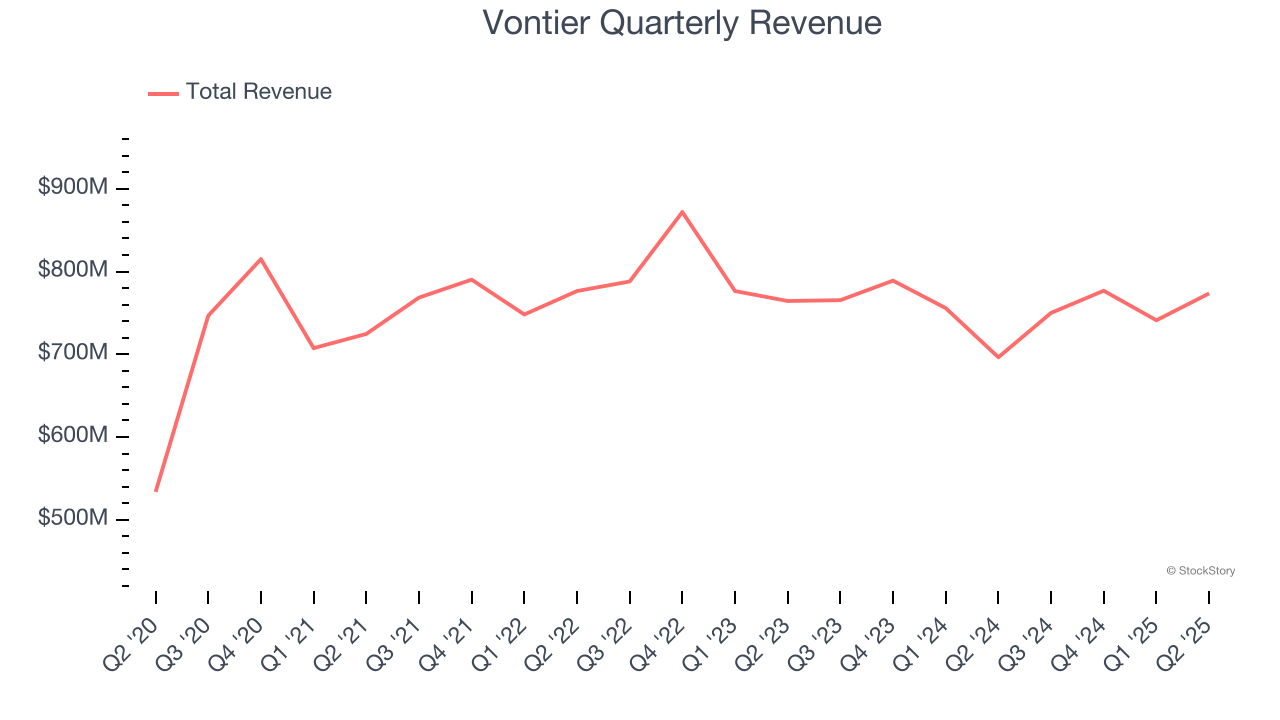
Long-term growth is the most important, but within industrials, a half-decade historical view may miss new industry trends or demand cycles. Vontier’s performance shows it grew in the past but relinquished its gains over the last two years, as its revenue fell by 2.5% annually. Vontier isn’t alone in its struggles as the Internet of Things industry experienced a cyclical downturn, with many similar businesses observing lower sales at this time. 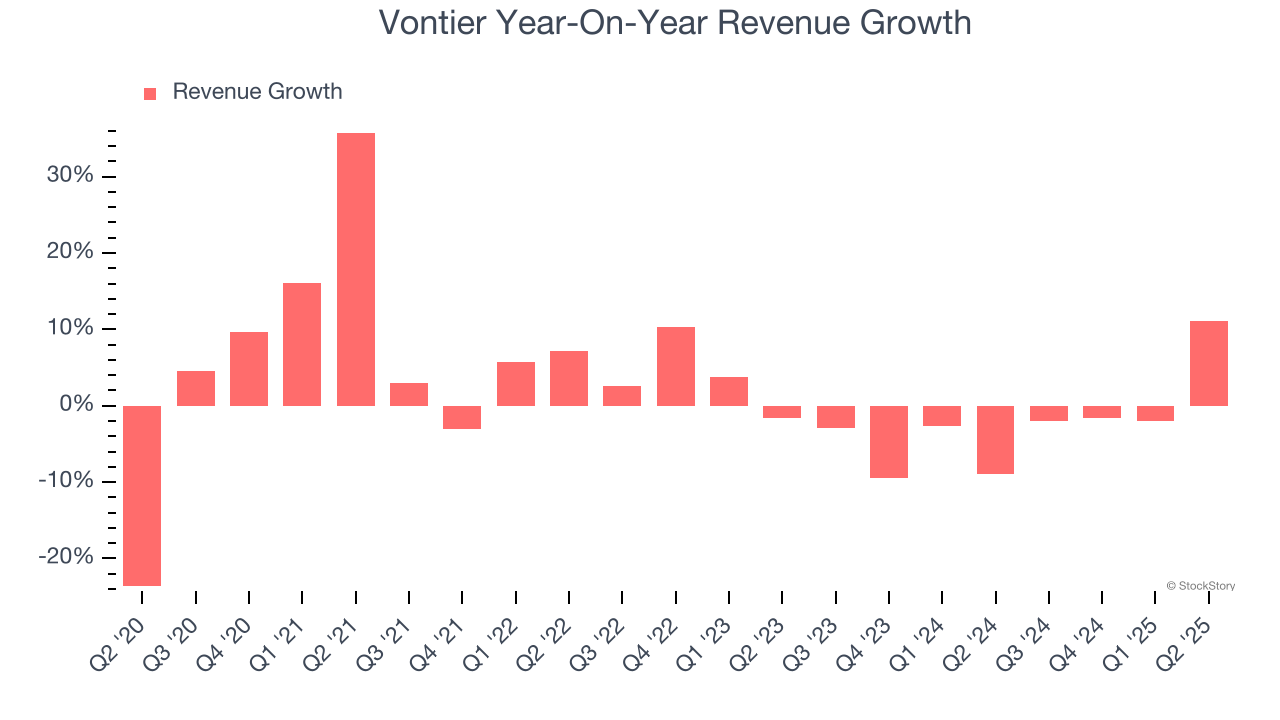
Vontier also reports organic revenue, which strips out one-time events like acquisitions and currency fluctuations that don’t accurately reflect its fundamentals. Over the last two years, Vontier’s organic revenue was flat. Because this number is better than its two-year revenue growth, we can see that some mixture of divestitures and foreign exchange rates dampened its headline results. 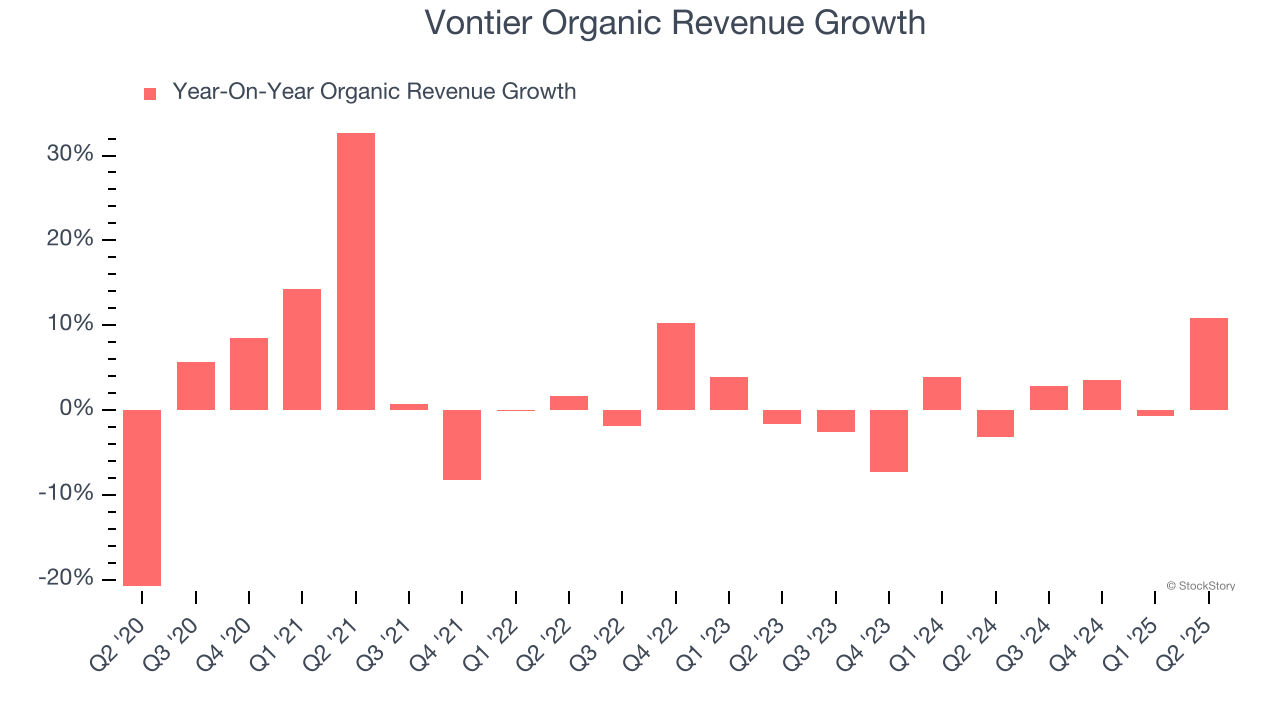
This quarter, Vontier reported year-on-year revenue growth of 11.1%, and its $773.5 million of revenue exceeded Wall Street’s estimates by 5.4%. Company management is currently guiding for flat sales next quarter.
Looking further ahead, sell-side analysts expect revenue to grow 1.7% over the next 12 months. Although this projection suggests its newer products and services will fuel better top-line performance, it is still below the sector average.
Software is eating the world and there is virtually no industry left that has been untouched by it. That drives increasing demand for tools helping software developers do their jobs, whether it be monitoring critical cloud infrastructure, integrating audio and video functionality, or ensuring smooth content streaming. Click here to access a free report on our 3 favorite stocks to play this generational megatrend.
Operating Margin
Operating margin is a key measure of profitability. Think of it as net income - the bottom line - excluding the impact of taxes and interest on debt, which are less connected to business fundamentals.
Vontier has been a well-oiled machine over the last five years. It demonstrated elite profitability for an industrials business, boasting an average operating margin of 18.7%. This result isn’t surprising as its high gross margin gives it a favorable starting point.
Analyzing the trend in its profitability, Vontier’s operating margin decreased by 2.4 percentage points over the last five years. This raises questions about the company’s expense base because its revenue growth should have given it leverage on its fixed costs, resulting in better economies of scale and profitability.
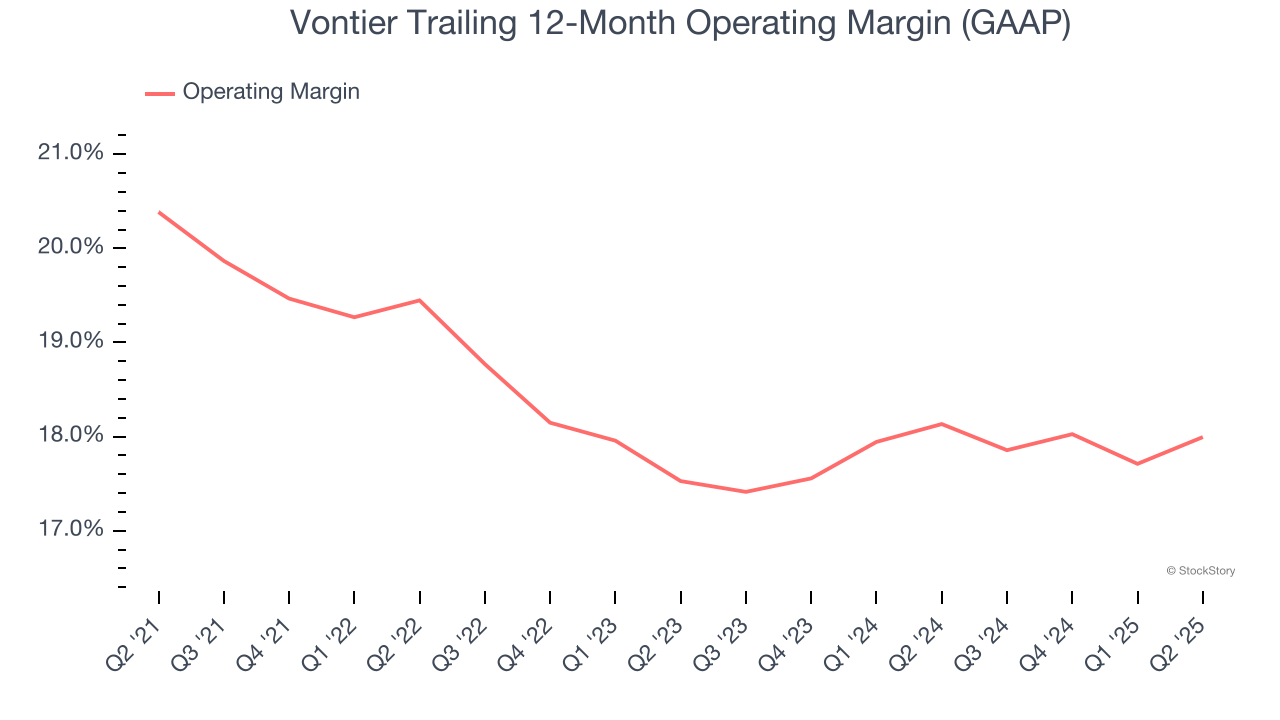
This quarter, Vontier generated an operating margin profit margin of 17.6%, up 1.2 percentage points year on year. The increase was encouraging, and because its operating margin rose more than its gross margin, we can infer it was more efficient with expenses such as marketing, R&D, and administrative overhead.
Earnings Per Share
Revenue trends explain a company’s historical growth, but the long-term change in earnings per share (EPS) points to the profitability of that growth – for example, a company could inflate its sales through excessive spending on advertising and promotions.
Vontier’s EPS grew at an unimpressive 7.3% compounded annual growth rate over the last five years. This performance was better than its flat revenue but doesn’t tell us much about its business quality because its operating margin didn’t improve.
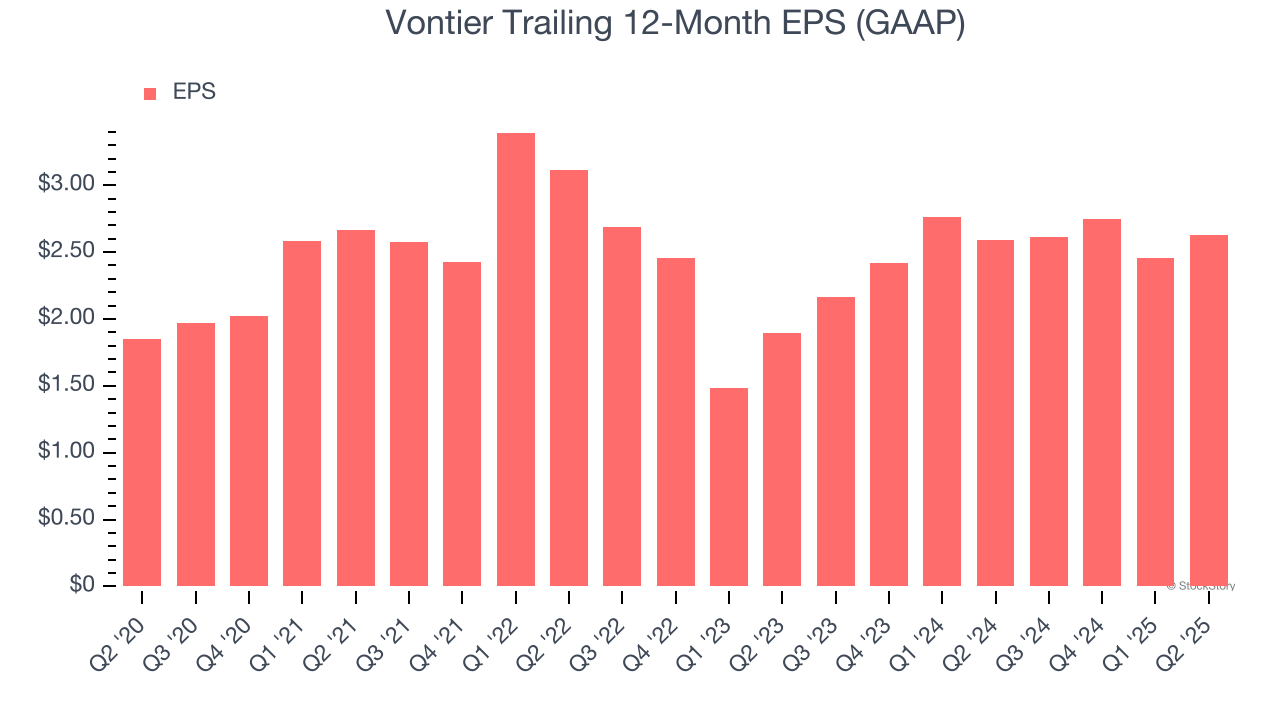
We can take a deeper look into Vontier’s earnings to better understand the drivers of its performance. A five-year view shows that Vontier has repurchased its stock, shrinking its share count by 12%. This tells us its EPS outperformed its revenue not because of increased operational efficiency but financial engineering, as buybacks boost per share earnings. 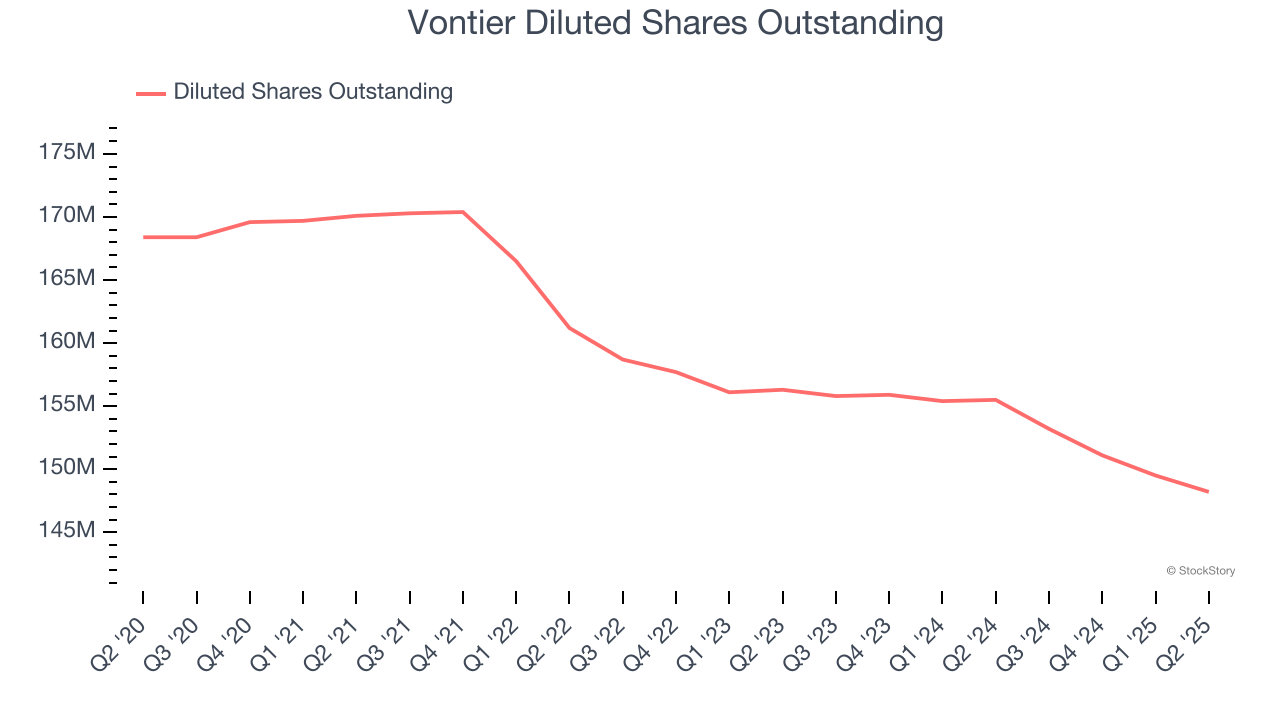
Like with revenue, we analyze EPS over a more recent period because it can provide insight into an emerging theme or development for the business.
For Vontier, its two-year annual EPS growth of 17.6% was higher than its five-year trend. This acceleration made it one of the faster-growing industrials companies in recent history.
In Q2, Vontier reported EPS at $0.62, up from $0.45 in the same quarter last year. This print beat analysts’ estimates by 1.9%. Over the next 12 months, Wall Street expects Vontier’s full-year EPS of $2.62 to grow 10.8%.
Key Takeaways from Vontier’s Q2 Results
We were impressed by how significantly Vontier blew past analysts’ organic revenue expectations this quarter. We were also excited its revenue outperformed Wall Street’s estimates by a wide margin. On the other hand, its revenue guidance for next quarter slightly missed. Zooming out, we think this quarter featured some important positives. The stock remained flat at $39.99 immediately after reporting.
Vontier may have had a good quarter, but does that mean you should invest right now? What happened in the latest quarter matters, but not as much as longer-term business quality and valuation, when deciding whether to invest in this stock. We cover that in our actionable full research report which you can read here, it’s free.
